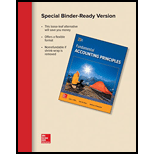
Concept explainers
Concept Introduction:
Sales variance is the difference between budgeted sales and actual sales. Sales variance can be because of two reasons
• Actual selling price of the product varies from the budgeted selling price and/or
• Actual quantity of sales varies from the budgeted quantity.
Therefore, sales variance is the sum of (i) Sales Price Variance and (ii) Sales Volume Variance.
Sales Price Variance:The difference between the actual selling price and the budgeted selling price is the Sales Price Variance.
Sales Volume Variance:The difference between actual quantity of sales and budgeted quantity is the Sales Volume Variance.
The following formulas are used to calculate Sales variance:
SalesVariance=Sales Price Variance+ Sales Volume Variance
Also Sales Variance = Budgeted Sales – Actual Sales
Sales Price Variance = Actual Sales - Actual quantity of Sales at budgeted price
Sales Volume Variance = Actual quantity at budgeted price -Budgeted quantity at budgeted price
Sales variance gives a view of deviations from the set standards which can be wither favorable or unfavorable
To Determine: Sales Price and Volume Variance
Want to see the full answer?
Check out a sample textbook solution
Chapter 23 Solutions
Loose Leaf for Fundamental Accounting Principles
- Jordan Incorporated manufactures water polo balls, which sell for $50. The company expects to incur the following costs during the coming year: variable manufacturing cost, $15 per unit; variable selling and administrative cost, $5 per unit; fixed manufacturing cost, $35,000; and fixed selling and administrative cost, $25,000. What is the break-even volume in sales dollars? Multiple Choice $100,000 $65,000 $50,000 None of these. $75,000arrow_forwardI am looking for help with this general accounting question using proper accounting standards.arrow_forwardI am trying to find the accurate solution to this general accounting problem with the correct explanation.arrow_forward
- Please provide the answer to this financial accounting question with proper steps.arrow_forwardAssume that Brittany acquires a competitor's assets on September 30thSeptember 30th of Year 1 for $350,000. Of that amount, $300,000 is allocated to tangible assets and $50,000 is allocated equally to two §197 intangible assets (goodwill and a one-year noncompete agreement). Given that the noncompete agreement expires on September 30thSeptember 30th of Year 2, what is Brittany's amortization deduction for the second year?arrow_forwardI am trying to find the accurate solution to this general accounting problem with the correct explanation.arrow_forward
- Are there any tax incentives or deductions delta takes advantage of when investing in property, plant, and equipment?arrow_forwardCan you help me solve this general accounting question using the correct accounting procedures?arrow_forwardCan you provide the accurate answer to this financial accounting question using correct methods?arrow_forward

 AccountingAccountingISBN:9781337272094Author:WARREN, Carl S., Reeve, James M., Duchac, Jonathan E.Publisher:Cengage Learning,
AccountingAccountingISBN:9781337272094Author:WARREN, Carl S., Reeve, James M., Duchac, Jonathan E.Publisher:Cengage Learning, Accounting Information SystemsAccountingISBN:9781337619202Author:Hall, James A.Publisher:Cengage Learning,
Accounting Information SystemsAccountingISBN:9781337619202Author:Hall, James A.Publisher:Cengage Learning, Horngren's Cost Accounting: A Managerial Emphasis...AccountingISBN:9780134475585Author:Srikant M. Datar, Madhav V. RajanPublisher:PEARSON
Horngren's Cost Accounting: A Managerial Emphasis...AccountingISBN:9780134475585Author:Srikant M. Datar, Madhav V. RajanPublisher:PEARSON Intermediate AccountingAccountingISBN:9781259722660Author:J. David Spiceland, Mark W. Nelson, Wayne M ThomasPublisher:McGraw-Hill Education
Intermediate AccountingAccountingISBN:9781259722660Author:J. David Spiceland, Mark W. Nelson, Wayne M ThomasPublisher:McGraw-Hill Education Financial and Managerial AccountingAccountingISBN:9781259726705Author:John J Wild, Ken W. Shaw, Barbara Chiappetta Fundamental Accounting PrinciplesPublisher:McGraw-Hill Education
Financial and Managerial AccountingAccountingISBN:9781259726705Author:John J Wild, Ken W. Shaw, Barbara Chiappetta Fundamental Accounting PrinciplesPublisher:McGraw-Hill Education





